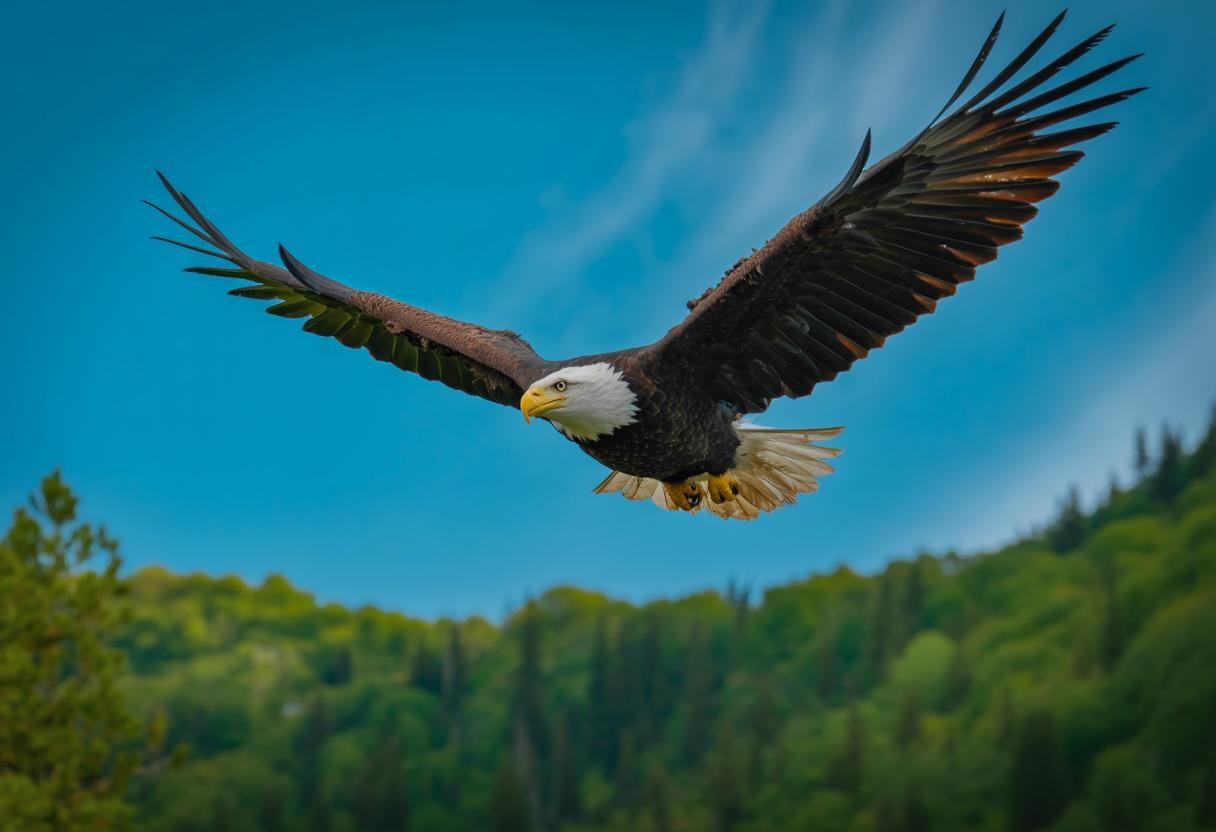Every June 20th, Americans commemorate a remarkable conservation triumph that transformed a national symbol from near-extinction to thriving populations across all 50 states. American Eagle Day celebrates not just the majestic bald eagle, but one of history’s most dramatic wildlife recovery stories that proves environmental protection can work when science, policy, and public will align.
The eagle’s journey from symbol to survivor
When the Continental Congress chose the bald eagle as America’s national emblem on June 20, 1782, over 100,000 breeding pairs soared across North America. By the 1960s, that number had plummeted to just 417 breeding pairs in the lower 48 states, pushing this iconic species to the brink of extinction.
The culprit wasn’t hunting alone, but DDT pesticide contamination that caused eggshell thinning and reproductive failure. Eagles accumulated toxins through their food chain, creating a silent ecological disaster that threatened to erase America’s most recognizable symbol forever.
The 1972 DDT ban marked a turning point, followed by intensive conservation efforts including captive breeding programs and habitat protection. These coordinated efforts mirror successful cultural preservation techniques that demonstrate how systematic approaches can revive endangered traditions and species alike.
Modern threats challenge conservation success
Lead poisoning emerges as primary danger
Despite recovery success, bald eagles face a devastating new threat that kills more birds annually than all other factors combined. Lead poisoning from ammunition and fishing tackle now affects an estimated 40% of eagle populations, causing neurological damage and slow, painful deaths.
Wildlife rehabilitation centers report treating hundreds of lead-poisoned eagles yearly, with many cases linked to hunters leaving gut piles containing lead bullet fragments. This ongoing crisis requires immediate policy intervention similar to environmental health measures addressing other hidden toxins that accumulate in our environment.
Renewable energy creates unexpected challenges
Wind turbines, essential for combating climate change, now pose collision risks for migrating eagles. This creates a complex conservation dilemma where green energy solutions conflict with wildlife protection goals, requiring innovative “smart siting” technologies to minimize impacts.
Scientific breakthroughs revolutionize eagle protection
Researchers have developed GPS tracking systems that monitor individual eagles in real-time, providing unprecedented insights into migration patterns and habitat preferences. These data-driven approaches help conservationists identify critical nesting areas and collision hotspots with surgical precision.
Advanced genetic analysis now enables scientists to track population diversity and identify which breeding programs produce the most viable offspring. This scientific methodology parallels research validating traditional practices through modern analytical techniques, proving that combining ancient wisdom with cutting-edge science yields powerful results.
Practical steps for eagle conservation
Support lead-free ammunition initiatives
Hunters can immediately impact eagle survival by switching to copper ammunition, which performs equally well while eliminating lead contamination. Many states now offer rebate programs making lead-free options cost-competitive.
Report injured eagles immediately
Quick intervention saves lives when eagles are found injured or behaving abnormally. The National Eagle Repository coordinates rescue efforts and maintains genetic material for future conservation research.
Advocate for stronger environmental policies
Contact representatives about strengthening the Migratory Bird Treaty Act and supporting funding for wildlife rehabilitation centers. Recent political developments, including policy changes affecting environmental protection, make citizen advocacy more crucial than ever.
The eagle’s future depends on collective action
American Eagle Day represents more than patriotic symbolism—it embodies our capacity to reverse environmental destruction through coordinated effort. With current populations exceeding 71,000 breeding pairs, the bald eagle’s recovery proves that combining scientific research, policy reform, and public engagement can achieve remarkable conservation victories that seemed impossible just decades ago.
